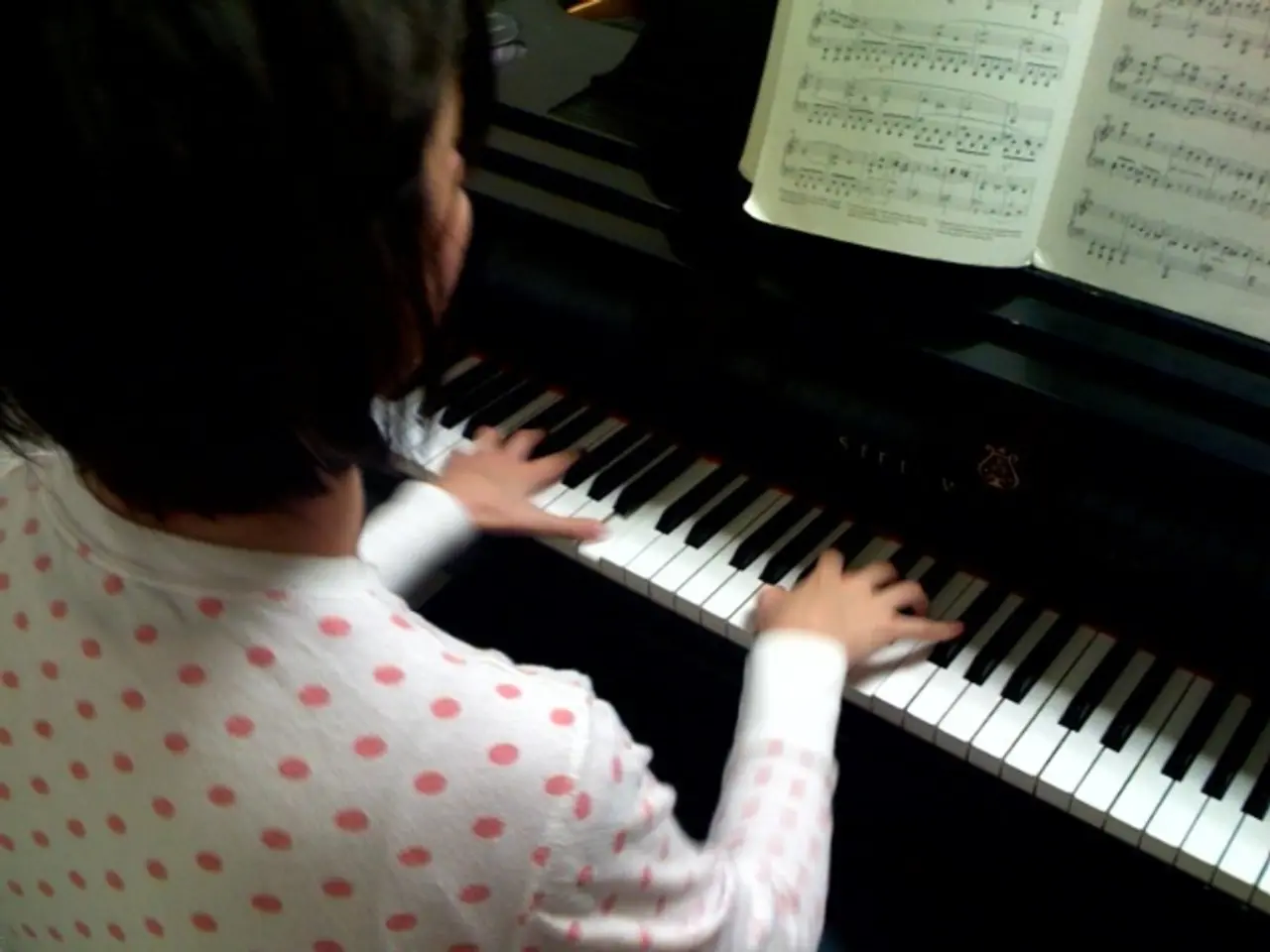Guide for Composing Piano Melodies: Crucial Advice for University Music Students
Writing a captivating piano song is an exciting journey that combines technical foundations, creative experimentation, and practical techniques. Here's a step-by-step guide to help you on your way.
Laying the Groundwork
To start your composing journey, it's essential to understand the basics of music theory. Familiarise yourself with staff, clefs, note values, key signatures, and time signatures. These form the foundation for writing and reading piano music.
Creating Melodies and Harmonies
Once you have a grasp of the basics, begin crafting melodies. Start with simple tunes, then add chords and progressions that complement the mood you want to create. Remember, writing lyrics that harmonise well with the melody is crucial when incorporating lyrics into a piano song.
Experimentation is Key
Experimentation is a crucial part of the songwriting process. If you're working digitally, use piano roll techniques like adjusting note lengths, offsets, and layering arpeggios to add interest and variation. Don't forget about rhythm! It brings everything to life and can be experimented with various tempos and time signatures.
Overcoming Creative Blocks
Creative blocks can hinder the songwriting process, but there are ways to overcome them. Try changing your environment or instrument, breaking your process into smaller tasks, focusing on rhythm, then melody, then harmony. Use songwriting prompts designed to jumpstart creativity and avoid burnout. Collaborating with other musicians can ignite fresh creative sparks and bring new ideas.
Finalising Your Composition
After you've created your melody and harmonies, it's time to refine your composition. Revising a draft is crucial to transforming a rough piano composition into a polished one. Don't forget about finalising and polishing your composition to ensure it's ready for performance.
Finding Your Style
As a music major, you have the creative freedom to experiment and develop your own style when composing piano music. Establishing a theme can guide chord progressions, melody, and rhythm in a piano composition. Every song begins with a melody, which can be discovered by playing around on the piano and experimenting with various notes and chord progressions.
Keeping it Engaging
To create a more dynamic and engaging piece, consider playing with dynamics, adding a bridge or chorus, and experimenting with different keys. Listening to music that excites you can give you the push needed to start writing music again.
Seeking Assistance
The process of writing piano music can seem intimidating, but organising it into manageable steps can simplify it. If you need help with academic needs, EssayService can provide additional time for composing. For more information on writing a song on piano, feel free to contact us.
- Pursue online education in music theory to expand your comprehensive understanding of piano composition.
- To enhance your creative skills in songwriting, consider enrolling in entertaining and engaging online courses focused on education-and-self-development for lifelong-learning.
- As you experiment with creative compositions, remember the importance of collaboration with other composers, who can serve as valuable mentors and offer fresh perspectives on arranging and refining your music.




